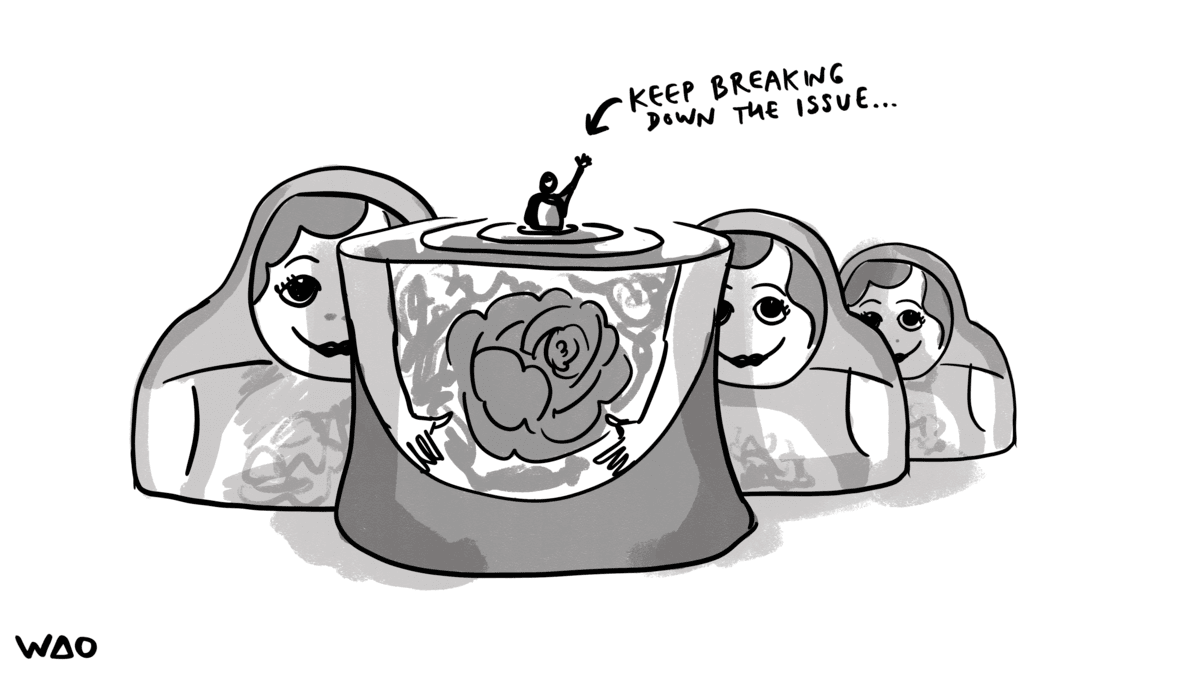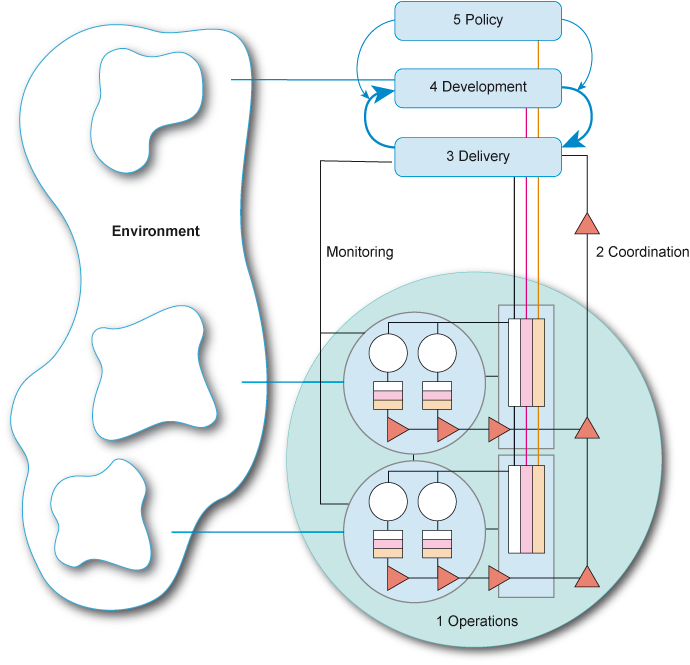TB871: Rethinking organisational structure through VSM
Note: this is a post reflecting on one of the modules of my MSc in Systems Thinking in Practice. You can see all of the related posts in this category.
The Viable System Model (VSM) conceptualises an organisation as a network of systems, each with its own purpose and autonomy (Hoverstadt, 2020). This approach helps in managing complexity and promotes a recursive approach to organisational structure, balancing autonomy and control.
Traditional hierarchical models of organisation emphasise top-down control, meaning that decision-making power is concentrated at the higher levels. This approach tries to minimise complexity, whereas the VSM embraces complexity by acknowledging that people at various levels of the organisation are best equipped to handle decisions relevant to their specific areas (The Open University, 2020).

A key aspect of the VSM is the balance between autonomy and cohesion. Too much autonomy can lead to fragmentation, while excessive control can stifle innovation. The VSM addresses this by allowing different parts of the organisation to operate semi-autonomously within defined constraints. This recursive or fractal nature of the VSM means that each part of the organisation, regardless of its complexity, is viewed as a viable system with similar needs and structures to the whole. (In other words, much like the Matryoshka dolls in the image above, they are nested inside one another.)
Understanding the structure of an organisation through the VSM involves distinguishing between primary and support activities. Primary activities deliver value directly to customers, while support activities sustain the organisation’s operational capabilities. This distinction helps in identifying the organisation’s core identity and value delivery mechanisms, with the idea that each component aligns with the overall purpose. As I have said before, this feels like a wider and deeper approach than that provided by OKRs, for example.
The VSM is a conceptual model rather than a prescriptive methodology. As such, it provides principles, laws, and axioms that guide the management of organisational complexity. It facilitates both diagnosis and design by comparing real-world situations with an idealised model, meaning that weaknesses can be identifyed and mismatches discovered to be addressed.
On a practical level, I see one of the VSM’s key use cases as helping organisations understand how to set up in a recursive way. By managing complexity at each level and devolving responsibility, managers can focus on their immediate areas of influence without micromanaging sub-levels. This approach aligns with the principle that managers should set purposes for the systems they directly manage, leaving sub-management levels to handle their respective systems. (It’s difficult to talk about this non-hierarchically, which is a problem that perhaps I’ll come back to.)
For example, in a software development company, the lead developer manages the development team, dealing with internal complexities, while the project manager oversees client interactions and project timelines. Each level handles its complexity, ensuring that the overall organisation functions smoothly. The recursive approach means that the problems faced by each level are similar, which simplifies management processes across the organisation.
There’s so much more to explore here. For example, I had a fascinating conversation with Steve Brewis yesterday, who knew Stafford Beer personally, and who uses the VSM in his consulting practice. I wanted to talk with him because I saw reference to his ‘snowflake model’ of the VSM which he used while working at BT. However, I think that should be the focus of a separate post.
References
- Hoverstadt, P. (2020). ‘The Viable System Model’. In Reynolds, M. & Holwell, S. (eds.) (2020). Systems Approaches to Making Change: A Practical Guide. London: Springer, pp.89-138.
- The Open University (2020) ‘3.3.3 Applying System 1’, TB871 Block 3 Tools stream [Online]. Available at https://learn2.open.ac.uk/mod/oucontent/view.php?id=2261487§ion=4.3 (Accessed 26 June 2024).



